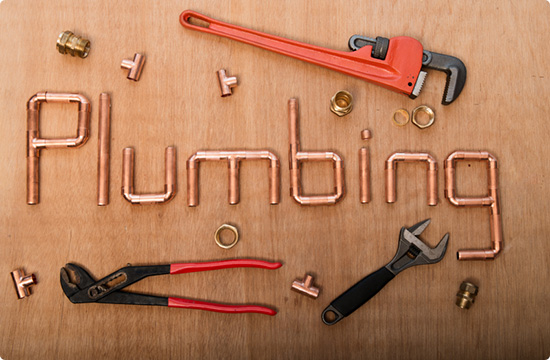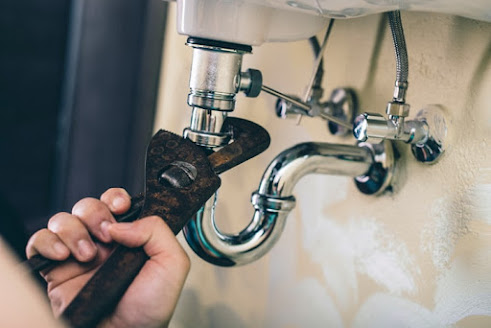Determining And Dealing With Plumbing Sounds In Your Home
Determining And Dealing With Plumbing Sounds In Your Home
Blog Article
They are making several great observations relating to Why Your Water Pipes Are Noisy and How To Shut Them Up as a whole in the article following next.

To detect noisy plumbing, it is very important to establish first whether the unwanted audios take place on the system's inlet side-in other words, when water is turned on-or on the drainpipe side. Noises on the inlet side have differed reasons: excessive water pressure, worn shutoff and also tap parts, improperly linked pumps or various other devices, incorrectly placed pipe bolts, and also plumbing runs having too many tight bends or other constraints. Noises on the drain side typically come from bad area or, similar to some inlet side sound, a format containing tight bends.
Hissing
Hissing noise that occurs when a faucet is opened somewhat normally signals extreme water stress. Consult your local water company if you think this problem; it will be able to tell you the water pressure in your area and also can mount a pressurereducing shutoff on the inbound water system pipeline if needed.
Various Other Inlet Side Noises
Squeaking, squealing, scraping, breaking, as well as tapping typically are triggered by the growth or contraction of pipes, typically copper ones providing warm water. The noises happen as the pipes slide against loose fasteners or strike nearby home framing. You can frequently pinpoint the area of the trouble if the pipelines are subjected; just comply with the audio when the pipelines are making noise. Probably you will discover a loosened pipeline hanger or an area where pipes exist so near floor joists or other framing items that they clatter versus them. Attaching foam pipeline insulation around the pipes at the point of get in touch with ought to remedy the problem. Make certain bands as well as hangers are secure and also supply sufficient assistance. Where feasible, pipe bolts ought to be attached to massive architectural elements such as foundation wall surfaces rather than to framing; doing so minimizes the transmission of vibrations from plumbing to surface areas that can magnify as well as transfer them. If attaching bolts to framing is unavoidable, cover pipes with insulation or other resistant material where they speak to fasteners, as well as sandwich the ends of brand-new bolts between rubber washers when mounting them.
Fixing plumbing runs that deal with flow-restricting tight or various bends is a last resource that should be taken on only after speaking with an experienced plumbing contractor. Regrettably, this circumstance is rather typical in older residences that may not have actually been developed with interior plumbing or that have seen numerous remodels, particularly by amateurs.
Chattering or Screeching
Extreme chattering or screeching that happens when a valve or tap is switched on, which typically goes away when the fitting is opened totally, signals loose or faulty inner parts. The option is to change the valve or tap with a new one.
Pumps as well as home appliances such as cleaning devices as well as dishwashers can transfer electric motor noise to pipes if they are poorly connected. Connect such things to plumbing with plastic or rubber hoses-never inflexible pipe-to isolate them.
Drainpipe Noise
On the drainpipe side of plumbing, the principal goals are to get rid of surface areas that can be struck by falling or rushing water and also to insulate pipes to consist of inescapable sounds.
In new construction, tubs, shower stalls, commodes, and wallmounted sinks as well as containers need to be set on or against resilient underlayments to minimize the transmission of audio through them. Water-saving toilets and faucets are less loud than standard models; install them rather than older kinds even if codes in your location still allow using older fixtures.
Drainpipes that do not run up and down to the basement or that branch right into straight pipeline runs sustained at floor joists or other framing present especially frustrating noise issues. Such pipelines are huge enough to radiate substantial resonance; they also bring considerable quantities of water, which makes the situation even worse. In brand-new building and construction, specify cast-iron soil pipes (the large pipes that drain pipes commodes) if you can manage them. Their massiveness includes much of the sound made by water going through them. Likewise, stay clear of transmitting drainpipes in walls shown bed rooms as well as areas where individuals collect. Walls including drainpipes must be soundproofed as was defined earlier, utilizing dual panels of sound-insulating fiber board and also wallboard. Pipes themselves can be wrapped with special fiberglass insulation produced the function; such pipelines have a resistant vinyl skin (often containing lead). Results are not constantly satisfactory.
Thudding
Thudding noise, typically accompanied by shuddering pipes, when a tap or device shutoff is switched off is a problem called water hammer. The sound and resonance are brought on by the resounding wave of stress in the water, which suddenly has no place to go. Sometimes opening a valve that releases water quickly right into an area of piping having a constraint, joint, or tee installation can create the exact same problem.
Water hammer can normally be treated by setting up fittings called air chambers or shock absorbers in the plumbing to which the trouble shutoffs or faucets are linked. These devices allow the shock wave created by the halted flow of water to dissipate in the air they contain, which (unlike water) is compressible.
Older plumbing systems might have brief upright sections of capped pipeline behind wall surfaces on tap runs for the same function; these can ultimately fill with water, reducing or damaging their efficiency. The remedy is to drain the water supply entirely by turning off the main water supply shutoff and opening up all taps. Then open the primary supply valve as well as close the taps one by one, starting with the faucet nearest the valve and also ending with the one farthest away.
WHY IS MY PLUMBING MAKING SO MUCH NOISE?
This noise indeed sounds like someone is banging a hammer against your pipes! It happens when a faucet is opened, allowed to run for a bit, then quickly shut — causing the rushing water to slam against the shut-off valve.
To remedy this, you’ll need to check and refill your air chamber. Air chambers are filled with — you guessed it — air and help absorb the shock of moving water (that comes to a sudden stop). Over time, these chambers can fill with water, making them less effective.
You’ll want to turn off your home’s water supply, then open ALL faucets (from the bathroom sink to outdoor hose bib) to drain your pipes. Then, turn the water back on and hopefully the noise stops! If you’re still hearing the sound, give us a call to examine further.
Whistles
Whistling sounds can be frustrating, as sometimes the source isn’t easily identified. However, if you can pinpoint which faucet or valve that may be the cause, you’ll likely encounter a worn gasket or washer — an easy fix if you replace the worn parts!Whistling sounds from elsewhere can mean a number of things — from high water pressure to mineral deposits. Your best plan of attack here is to give our plumbing experts a call. We’ll be able to determine where the noise is coming from and what the cause may be, then recommend an effective fix!
Cracks or Ticks
Cracking or ticking typically comes from hot water going through cold, copper pipes. This causes the copper to expand resulting in a cracking or ticking sound. Once the pipes stop expanding, the noise should stop as well.
Pro tip: you may want to lower the temperature of your water heater to see if that helps lessen the sound, or wrapping the pipe in insulation can also help muffle the noise.
Bangs
Bangs typically come from water pressure that’s too high. To test for high water pressure, get a pressure gauge and attach it to your faucet. Water pressure should be no higher than 80 psi (pounds per square inch) and also no lower than 40 psi. If you find a number greater than 80 psi, then you’ve found your problem!
Next step is to give us a call in order to install a pressure regulator. Trust us, you don’t want to wait to resolve this issue. Not only is the sound annoying, but high water pressure can be destructive to your home — including damaging certain appliances, like your washer and dishwasher.
Dripping
You might be accustom to the slow quiet drip your kitchen faucet makes. You might have even tuned out your bathroom sink dripping and drabbing all day long — but it’s time to find its cause.
A slow drip could signify a variety of easy to fix issues, such as a worn out O ring, or loose part. And by ignoring the drip, you could be wasting up to 2,000 gallons of water a year! So start conserving water — get it looked at ASAP.
https://www.pwessig.com/blog/2018/december/why-is-my-plumbing-making-so-much-noise-/

I'm very serious about Why Your Water Pipes Are Noisy and How To Shut Them Up and I'm hoping you appreciated the entire blog entry. Appreciated our piece? Please share it. Let other people check it out. Thanks a bunch for your time. Come back soon.
Here Report this page